FEAR, WORRY AND ANXIETY
written by Ronald Peters, MD, MPH
To conquer fear is the beginning of wisdom. . . . . . Bertrand Russell
WORRY – HOW TO STOP THE HABIT
Everyone has problems in life that create worry, the everyday form of fear. To stop the habit of worry, acknowledge the fear, but do not run a story line on the issue for days or months. Instead, research solutions to the problem through study, contemplation and consultations with friends, family, professionals, as needed. Then let the issue go from your mind and trust in Divinity to provide guidance in resolving the challenge. The answer will come to you in a serendipitous and often unexpected manner.
On the other hand, if you persist with worry for days, months and even years, because of the fear programmed into your unconscious mind during the adverse events of childhood, you will create suffering and disease as the worry slides into anxiety and physical symptoms of stress. “What you fear, you draw near” is an eternal truth based on the Law of Attraction – “what you put out, you get back”. Health comes from integrating Body, Mind, and Spirit; your mind and spirit are your “unseen anatomy” which extends into higher realms, touching the Divine.
Jesus said the same thing in Philippians 4:6-7 (New International Version)
“Do not be anxious about anything, but in every situation, by prayer and petition, with thanksgiving, present your requests to God. And the peace of God, which transcends all understanding, will guard your hearts and your minds in Christ Jesus.”
According to the teachings of Buddha:
“Be Present in the Now. The secret of health for both mind and body is not to mourn the past, worry about the future, or anticipate troubles, but to live in the present moment wisely and earnestly.”
PART 1: OUR MODERN AGE OF FEAR, WORRY AND ANXIETY
PART 2: FEAR PREPARES YOUR BODY TO FIGHT OR RUN
PART 3: CHILDHOOD EXPERIENCE AND THE SOURCE OF FEAR
PART 4: CONSCIOUSNESS CREATES REALITY
PART 5: TRANSFORMING FEAR INTO HEALING & SELF-KNOWLEDGE
PART 1: OUR MODERN AGE OF FEAR, WORRY AND ANXIETY
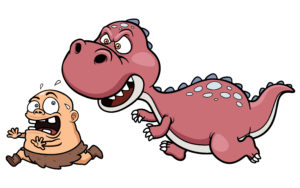 Fear has insured human survival for millions of years by enabling our ancestors to run from danger. Paradoxically, this same survival system is now killing us off through stress related diseases as well as birthing untold patterns of mental suffering and anguish. The enemy has moved inside our minds and there is nowhere to run. Our survival now depends on exploring the dark landscapes of our minds to discover the source of fear within. In this way fear once again becomes our friend by signally the need for personal growth and spiritual insight. Perhaps in this manner, fear can once again help mankind survive.
Fear has insured human survival for millions of years by enabling our ancestors to run from danger. Paradoxically, this same survival system is now killing us off through stress related diseases as well as birthing untold patterns of mental suffering and anguish. The enemy has moved inside our minds and there is nowhere to run. Our survival now depends on exploring the dark landscapes of our minds to discover the source of fear within. In this way fear once again becomes our friend by signally the need for personal growth and spiritual insight. Perhaps in this manner, fear can once again help mankind survive.
Americans are very fearful. We are told “how much we should worry” by the fast-food news media, but unlike the big families and villages of our ancestors, we are often alone, and the most popular form of fear has become worry. There is no benefit to worry. Planning and preparation are quite useful to meet a new challenge, but worry is simply a soft form of fear which fires the fight/flight stress response system hardwired into our bodies.
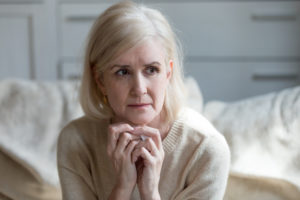 Worry focuses obsessively on an issue, but slides easily into anxiety, or, fear without a clear object, a “danger” for which there is no appropriate action to take in order to deal with the problem. It is an uneasiness of mind and body that arises unexpectedly, gripping our being like the fingers of an unknown enemy who lives inside us. It is pain and apprehension, offering no action or solution, just hanging upon us until some passing wind blows it away, at least temporarily.
Worry focuses obsessively on an issue, but slides easily into anxiety, or, fear without a clear object, a “danger” for which there is no appropriate action to take in order to deal with the problem. It is an uneasiness of mind and body that arises unexpectedly, gripping our being like the fingers of an unknown enemy who lives inside us. It is pain and apprehension, offering no action or solution, just hanging upon us until some passing wind blows it away, at least temporarily.
Fear is a complex companion that can prepare us mentally for a challenging task. It can birth courage, accomplishment, victory and the advancement of knowledge, but it can also create anxiety, limitation, ignorance, phobia, paralysis, and disease. Fear prepares us for action mentally and physically, but if it is sustained too long the improved focus, concentration, memory and preparedness in mind and body slides into worry, anxiety, timidity, sadness, neurosis, and depression.
Ways to understand and control fear and anxiety have appeared in religious, philosophical and other forms of literature for thousands of years. However, over the past few hundred years, culminating in this century, mankind has moved into larger and larger cities away from the close influence of nature, and the topic is written on more commonly, often with a sense of anxious urgency. As the title to a poem published in 1950, W.H. Auden introduced the words “The Age of Anxiety” to describe growing trends in contemporary society. Loneliness, lack of self-worth, and conformity in a commercial and mechanized world were rising features of people living in the Atomic Age and faced by the horror of war.
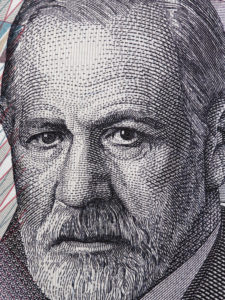 Sigmund Freud, like many psychologists, singled out anxiety as the crucial problem for mental health. He wrote that solving the “riddle” of anxiety must cast “a flood of light on our whole mental existence.”[i]
Sigmund Freud, like many psychologists, singled out anxiety as the crucial problem for mental health. He wrote that solving the “riddle” of anxiety must cast “a flood of light on our whole mental existence.”[i]
According to social psychologist R.R. Willoughby, writing in 1935, “anxiety is the most prominent mental characteristic of Occidental civilization”. He believed that suicide, mental disorder, and divorce were symptoms of the underlying disease afflicting modern society – anxiety. The list goes on and on, including Arnold Toynbee, Martin Heidegger, Paul Tillich, Reinhold Niebuhr and others who have been concerned by the disturbing rise of anxiety in Western culture.
Since the times of Toynbee and Tillich, fear, worry and anxiety have grown, while society has, arguably, become safer. The specter of global nuclear destruction has withdrawn into isolated acts of terrorism. According to Chapman University’s Survey of American Fears, published in 2015, our biggest fears are corrupt government officials and cyber-terrorism, but the list is long and personal.
The time has come for mankind to realize that the source of fear is not the world outside, but our interpretations of life events, arising from our beliefs and unowned emotional pain. The world is a stage upon which we individually and collectively project our creativity and joy, or, our buried traumas. Fear is often the signal for looking at what we have created
Anxiety is, therefore, not an enemy as many have concluded – it can also be a gateway.
PART 2: FEAR PREPARES YOUR BODY TO FIGHT OR RUN
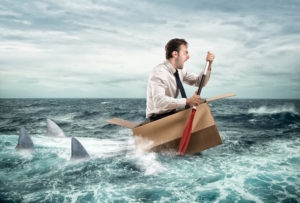 While dangers have changed dramatically, the human body has not. Fear, or its derivatives worry, and anxiety, activate you for fight or flight via the sympathetic nervous system and the powerful hormones, cortisol and adrenalin. These stress hormones instantly orchestrate your body for one purpose only, fight or flight, physical action, such as running, fighting, grabbing, climbing, hitting, or whatever is necessary to escape danger and survive.
While dangers have changed dramatically, the human body has not. Fear, or its derivatives worry, and anxiety, activate you for fight or flight via the sympathetic nervous system and the powerful hormones, cortisol and adrenalin. These stress hormones instantly orchestrate your body for one purpose only, fight or flight, physical action, such as running, fighting, grabbing, climbing, hitting, or whatever is necessary to escape danger and survive.
However, this powerful stress physiology fires to some degree at the first thought of fear, regardless if that fear has an object about which something can be done. Your body believes you and cannot distinguish a real danger from an imaginary one. This relentless overuse of the stress system inevitably leads to the variety of stress-related symptoms and diseases seen so commonly today.
Since mankind has moved into a complex social world, his survival depends less and less on physical needs and more on social and mental ones. His dangers are no longer predatory wild animals, warring tribesmen, and the challenges of nature. Instead, they have become worry about finances, employment and the future in an ever-changing  and uncertain world.
and uncertain world.
Robert Sapolsky, Stanford professor and author of the remarkable book, Why Zebras Don’t get Ulcers, gives us the bottom line:
“If you plan to get stressed like a normal mammal, you had better turn on the stress response or else you are dead. But if you get chronically stressed, like a Westernized human, the you are more at risk for heart disease and some of the other leading causes of death in Westernized life. Stress is a state of mind . . . it’s measurable and dangerous, and humans can’t seem to find their off-switch.”
PART 3: CHILDHOOD EXPERIENCE AND THE SOURCE OF FEAR
We are programmed by fear since birth. Many believe that most of the ego operating system is done by the age of three or four, long before the onset of childhood memories. The non-thinking and vulnerable human infant is in a hypnotic trance, feeling his or her way in a complex, startling and often scary world. Add in neglect, abandonment, family violence, and abuse and the grip of fear intensifies.
Also, the child feels the mother’s emotions as his or her own for the first seven or eight years of life before they break away into the instability of their own ego structured world. All in all, the child has had a graduate training program in fear and fearful thinking before they are off to the first grade.
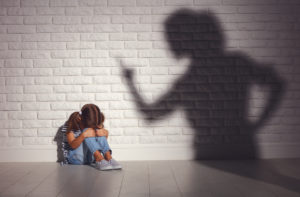 For the child, intense emotions are overwhelming and therefore automatically suppressed. It is like a soldier who blocks out overwhelming emotions from a horrific battle scene. But the unfelt emotions are not gone, they are stored in the unconscious mind as emotional wounds, each wrapped up in rudimentary and unconscious beliefs, such as “I am not safe”, “I am bad or unworthy”, “relationships are dangerous” and many more.
For the child, intense emotions are overwhelming and therefore automatically suppressed. It is like a soldier who blocks out overwhelming emotions from a horrific battle scene. But the unfelt emotions are not gone, they are stored in the unconscious mind as emotional wounds, each wrapped up in rudimentary and unconscious beliefs, such as “I am not safe”, “I am bad or unworthy”, “relationships are dangerous” and many more.
Just as physical wounds heal automatically without you having to think about it, emotional wounds also have a natural healing mechanism. The stored emotions will unconsciously influence your choices in life in order to set up circumstances, which will permit the unowned emotions to come up, be felt and released. Basically the past will return to us again and again until we allow the emotions to surface into consciousness.
Carl Jung addresses this issue when he said:
“Emotion is the chief source of all becoming conscious. There can be no transforming of darkness into light and of apathy into movement without emotion.”
Carl Jung referred to the unconscious mind as the shadow, and its relentless efforts to discharge its contents as shadow projection.
PART 4: CONSCIOUSNESS CREATES REALITY
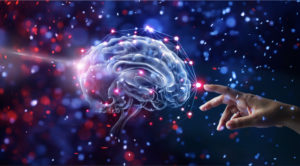 Consciousness creates reality. We all create our life experiences in co-creation with those around us, including society. The primary creative force is our thoughts, especially as they coalesce into beliefs. Our strong, foundation beliefs come from our family and our society. When a belief is energized by emotion, such as anger or passion, the creative power is stronger.
Consciousness creates reality. We all create our life experiences in co-creation with those around us, including society. The primary creative force is our thoughts, especially as they coalesce into beliefs. Our strong, foundation beliefs come from our family and our society. When a belief is energized by emotion, such as anger or passion, the creative power is stronger.
However, not all our beliefs are conscious – many are buried in the unconscious mind seeded there during the early years of childhood. For example, people worry because they believe, sometimes consciously and often unconsciously, that something bad is going to happen. Living life with beliefs that bad things are going to happen is not a good idea, as this increases the probability of bad outcomes. Stated more simply, ‘what you fear you draw near’. Obviously, it is much better to believe that life will bring us happiness and fulfillment.
The creative power of our minds is a wondrous gift. If we create beautiful life experiences, so be it, enjoy. That was the Original intention. But we also create painful life experiences leading to all manner of suffering in our relationships, work, finances, as well as in our bodies with physical diseases. As we suffer, we often complain, sometimes singing our ‘sad tale of woe’ for months, even years. We feel victimized by a harsh and cruel world, until we take the leap and try out the paradigm shifting, inconvenient and eternal truth: we create our reality and we are responsible for it.
Buddha said in elegant simplicity what a great many spiritual masters have said for centuries: “All that we are is the result of what we have thought.”
 More recently, quantum physicists have come to the same conclusion, after failing to separate the observer from the observed (so much for ‘objective’ reality). R.C. Henry, Professor of Physics at Johns Hopkins University, writes in his book “The Mental Universe”:
More recently, quantum physicists have come to the same conclusion, after failing to separate the observer from the observed (so much for ‘objective’ reality). R.C. Henry, Professor of Physics at Johns Hopkins University, writes in his book “The Mental Universe”:
“A fundamental conclusion of the new physics also acknowledges that the observer creates the reality. . . . Pioneering physicist Sir James Jeans wrote: “Mind no longer appears to be an accidental intruder into the realm of matter, we ought rather hail it as the creator and governor of the realm of matter. Get over it and accept the inarguable conclusion. The universe is immaterial-mental and spiritual.”
We are responsible for what we create, which is much more empowering than the helpless victim living in a hostile world and waiting for the next calamity to befall him.
But paradigms shift slowly, especially when they bear the heavy weight of societal beliefs. We are taught by parents and society to be victims, and how can the innocent child be responsible for abuse or disease? What about Auschwitz, wars and famines?
To comprehend the vast nature of the human drama, requires an understanding of consciousness that includes the directives of the Soul expressing itself in life experience and its impact on individual and collective consciousness. These are profound spiritual issues that mark the horizon of human understanding and will eventually unfold for us as we explore the creative power of our individual consciousness in our everyday life experiences.
For now, you can try this new tool and see how it works by considering every event is your life as your creation. Certainly, you do not create disease and suffering consciously. It is the unconscious pain and dysfunctional beliefs buried in the darkness of the unconscious mind that create suffering, pain, and disease. The emotional pain and dis-ease is the signal for looking self-exploration and healing. The purpose of disease is healing.
According to Carl Jung, “Until you make the unconscious conscious, it will rule your life and you will call it fate.”
PART 5: TRANSFORMING FEAR INTO HEALING AND SELF-KNOWLEDGE
 The Inner Child is a good model for understanding the formative nature of the unconscious mind in creating life experiences. The myriad experiences of the child, starting in the womb, sculpt the ego structure which will operate for a lifetime, until, as adults, we release the emotional pain and change the beliefs that do not serve us well. Jesus called this, “giving up the ways of the child”.
The Inner Child is a good model for understanding the formative nature of the unconscious mind in creating life experiences. The myriad experiences of the child, starting in the womb, sculpt the ego structure which will operate for a lifetime, until, as adults, we release the emotional pain and change the beliefs that do not serve us well. Jesus called this, “giving up the ways of the child”.
The pristine nature of the newborn child is pure love, but soon to be molded by life experiences created by parents, family and society. If the child is raised by unconditionally loving parents, the ego programming will support a healthy and productive life. But few of us have Christ-like parents and the lessons begin early as parents struggle with the challenges of life all the while doing the best that they can.
Inevitably, the child experiences fear, frustration, anger, sadness, neglect, abandonment and many other emotions. The powerful emotions are overwhelming and the child suppresses them and they take up residence in the unconscious mind, usually wrapped up by rudimentary beliefs, such as “I am not safe”, “my needs are not important”, “I can’t trust”, “relationships are dangerous”, and many others.
For simplicity, within the unconscious mind, the aggregate of fearful emotions is called the Fearful Child, sad and hurt feelings are the Wounded Child and anger is the Angry Child. To some degree, these emotional wounds are within all people and the only way they can heal is to create circumstances in life that would bring up the feeling for ownership and release, as well as the opportunity to identify and change dysfunctional beliefs. The child of an alcoholic often marries an alcoholic, the abandoned child is often abandoned later on in life, the abused child find frequently faces abuse as an adult, and the list goes on and on.
Of course, emotional wound healing depends on the expression of emotions as adults. Tears are natural when you have loss, anger sets boundaries and is protective, and fear prepares you to survive danger. David Viscott called emotional expression the “natural therapeutic experience”.
Children are born expressing emotions, but they are often taught early in childhood to break this natural mindbody process with dysfunctional beliefs such as “little girls shouldn’t be angry”, and “boys shouldn’t cry”. If the child grows up losing the natural expression of emotion, then the dramas in life serve no healing purpose. Emotions are stuffed again and again, always for “good reasons” and recurrent life dramas become pain and suffering, often lasting for a lifetime. Eventually the body will express the emotions as symptoms and diseases. Basically, either you express your emotions or your body will. Medical research has shown that severe childhood stress increases the risk of disease for the adult.
In an article entitled, Unlocking the Secrets of a Wounded Psyche: The Miraculous Survival System that is also a Prison, Daniela Sieff interviews Jungian analyst Donald Kalsched who talks about how the survival system of a child develops to protect him or herself from psychological wounding, and discovers how that survival system can cause more damage than the original wound. In other words, the survival system of the child becomes the prison of the adult.
 However, using the Inner Child Model, if you let the wounded child express the fear you have about a worrisome event in your life, then the fear is released. You have healed the wounded child instead of becoming the wounded child. Paul Ferrini refers to the same process in his marvelous book, Love Without Conditions, Reflections of the Christ Mind, when he recommends us to re-parent the wounded child within by owning and releasing the painful emotions and dysfunctional beliefs.
However, using the Inner Child Model, if you let the wounded child express the fear you have about a worrisome event in your life, then the fear is released. You have healed the wounded child instead of becoming the wounded child. Paul Ferrini refers to the same process in his marvelous book, Love Without Conditions, Reflections of the Christ Mind, when he recommends us to re-parent the wounded child within by owning and releasing the painful emotions and dysfunctional beliefs.
In Chapter 14 of my book Edgework, Exploring the Psychology of Disease, there is a detailed description of Inner Child Writing as a means to discharge the emotions arising from shadow projection occurring in your daily life.
The truly remarkable outcome of effective inner child writing is that the events in your life will change because you no longer need the experience. And, in the process you have learned more about yourself, which is called self-realization. You have transformed fear into deep inner healing and growth.
In the 1800’s, Soren Kierkegaard was the first to focus on anxiety, or unnamed fear, as a marker of growth. He held that “anxiety is always to be understood as oriented towards freedom.” He considered freedom as the goal of personality directed evolution, and the “possibility” of spiritual evolution. Anxiety is a “seeking after adventure, a thirst for the prodigious, the mysterious”, similar to the child learning to walk and live in an unknown and potentially dangerous environment
A century later, the renowned psychologist Rollo May explored the significance of anxiety to modern man is book, The Meaning of Anxiety. He wrote in the preface to the book:
“Every person experiences continual shocks and threats to his existence; indeed, self-realization occurs only at the price of moving ahead despite such shocks. Anxiety, from the positive point of view, is an indication of new possibility for the development of self.”
He believed that anxiety “was essential to the human condition,” because it should be an inner signal to greater self-awareness and enhanced personal performance.
Now, we have the tools to explore the dark terrain of the mind. And, in addition to fear and anxiety, we can use anger and sadness as well as markers for greater self-awareness and spiritual growth. And in the process, we discover that there are no demons or monsters within the darkness, but rather at the source of all our fears is merely a frightened child.
Copyright Ronald Peters MD
END





